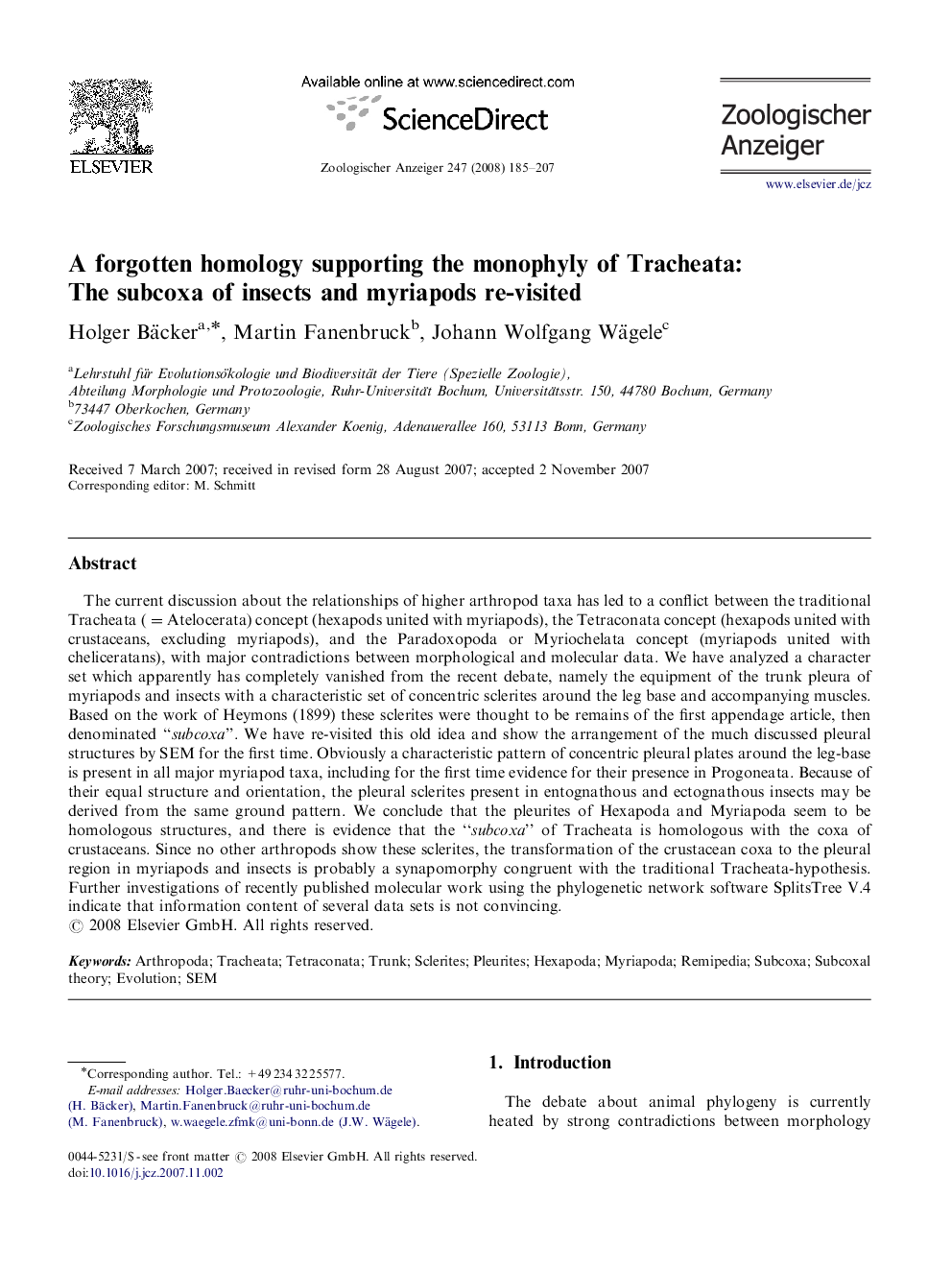| Article ID | Journal | Published Year | Pages | File Type |
|---|---|---|---|---|
| 2790842 | Zoologischer Anzeiger - A Journal of Comparative Zoology | 2008 | 23 Pages |
The current discussion about the relationships of higher arthropod taxa has led to a conflict between the traditional Tracheata (=Atelocerata) concept (hexapods united with myriapods), the Tetraconata concept (hexapods united with crustaceans, excluding myriapods), and the Paradoxopoda or Myriochelata concept (myriapods united with cheliceratans), with major contradictions between morphological and molecular data. We have analyzed a character set which apparently has completely vanished from the recent debate, namely the equipment of the trunk pleura of myriapods and insects with a characteristic set of concentric sclerites around the leg base and accompanying muscles. Based on the work of Heymons (1899) these sclerites were thought to be remains of the first appendage article, then denominated “subcoxa”. We have re-visited this old idea and show the arrangement of the much discussed pleural structures by SEM for the first time. Obviously a characteristic pattern of concentric pleural plates around the leg-base is present in all major myriapod taxa, including for the first time evidence for their presence in Progoneata. Because of their equal structure and orientation, the pleural sclerites present in entognathous and ectognathous insects may be derived from the same ground pattern. We conclude that the pleurites of Hexapoda and Myriapoda seem to be homologous structures, and there is evidence that the “subcoxa” of Tracheata is homologous with the coxa of crustaceans. Since no other arthropods show these sclerites, the transformation of the crustacean coxa to the pleural region in myriapods and insects is probably a synapomorphy congruent with the traditional Tracheata-hypothesis. Further investigations of recently published molecular work using the phylogenetic network software SplitsTree V.4 indicate that information content of several data sets is not convincing.
